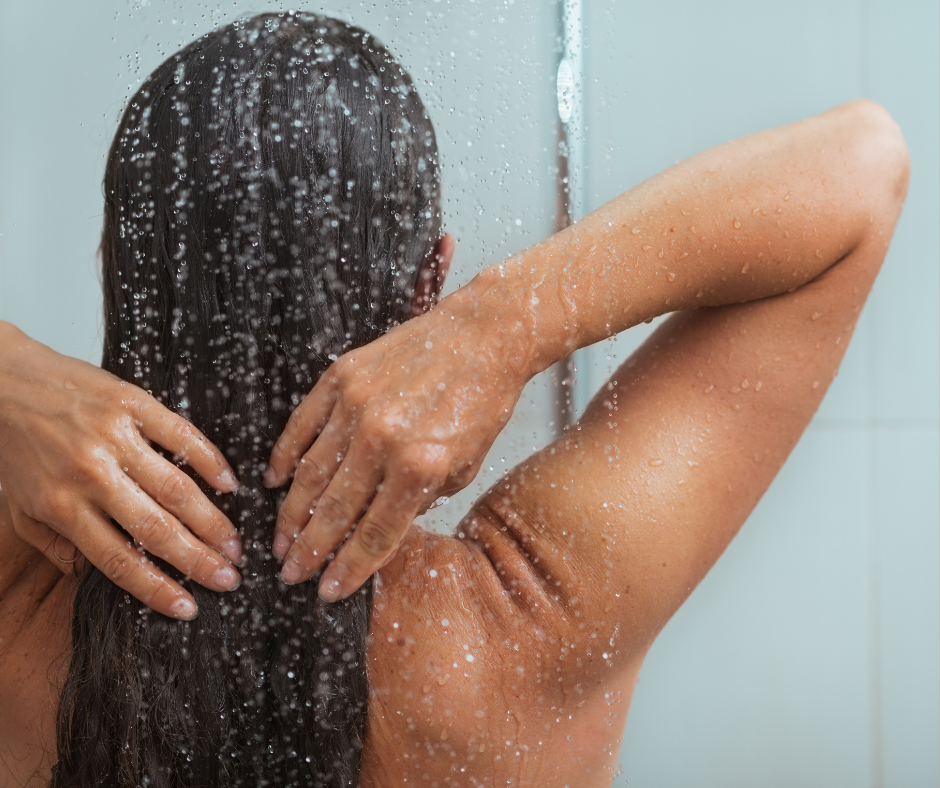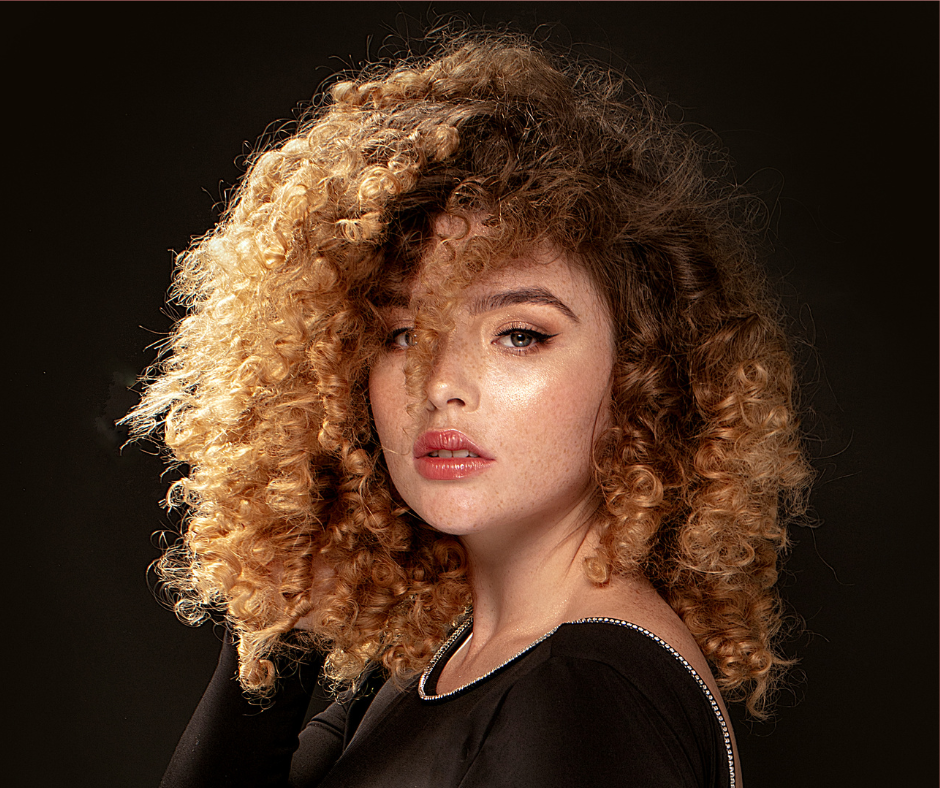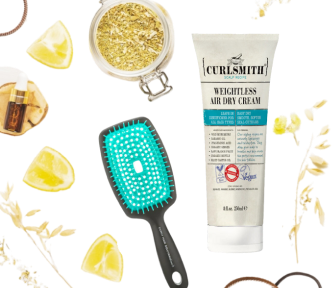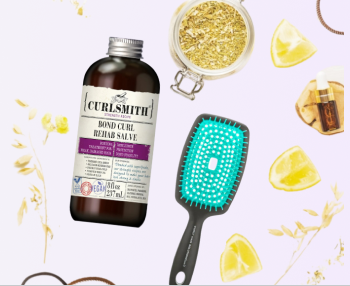We often rotate between shampoos, conditioners, stylers, and leave-ins, meaning residue from all these different products can build up on our hair. Many curlies also use a lot of product in the search for their ideal curls. If you want to get the best results out of your hair, staying on top of product buildup is very important.
We’ll be covering how to tell when your hair is experiencing product buildup, how to clear it right away, and how to keep it from coming back too quickly.
How Do You Know if You’re Dealing with Product Buildup?
When leftover product accumulates on your scalp and strands over time, it doesn’t just leave your hair looking and feeling off - it also makes it harder for your scalp to stay healthy. And when your scalp isn’t thriving, your curls won’t either.
The tricky part is that it’s not always easy to tell what’s really happening on your scalp. Is it dryness, dandruff, buildup, or even a mix of all three? The signs can overlap, but here’s how to spot product buildup specifically:
-
Itchy scalp: A sudden itch can be a sign that leftover product is lingering on your scalp longer than it should.
-
Flakes that aren’t dandruff: Buildup flakes are usually white or gray, and they don’t typically cause the same itchiness or irritation as dandruff.
-
Flat, weighed-down roots: If your curls look limp and your volume is gone, buildup is likely weighing them down.
-
Unusual odor: If your scalp smells “off” soon after washing, product residue may be creating a breeding ground for bacteria.
-
Bumps or breakouts: Like clogged pores on your face, buildup on the scalp can show up as small bumps or breakouts.
-
Slower growth or shedding: When buildup clogs your follicles, it can interrupt the natural growth cycle and lead to extra shedding.
-
Styles that won’t last: If curls or styles fall flat too quickly, buildup may be leaving a coating that blocks products from working as they should.
-
Texture changes: Hair that feels rough, coated, or stringy - even right after a wash - is often weighed down by residue.
-
Increased breakage: Because buildup weakens the hair shaft, strands can become dry, brittle, and more prone to snapping.
-
Hard-to-wash hair: If shampoo doesn’t lather well or your hair still feels dirty after cleansing, buildup is usually the cause.
-
Dull or lifeless look: When residue coats your strands, it blocks light reflection, leaving hair looking flat instead of shiny. This dullness can also be due to minerals from hard water.
-
Heavy or greasy feel: Even after washing, hair may feel weighed down, sticky, or oily at the roots.
-
Loss of definition: If your curls clump unevenly or refuse to hold their usual shape, buildup may be keeping them from forming properly.
-
More often than not, if your hair suddenly isn’t behaving the way it usually does, buildup is to blame.
Dandruff vs. Product Buildup: How to Tell the Difference
It’s easy to confuse the two, but there are a few quick ways to figure out what you’re really dealing with:
-
Colour of flakes: Buildup flakes are usually white or gray, while dandruff flakes often have a yellowish tint.
-
Feel test: Run your fingers through your hair. If it feels greasy or coated, you’re likely dealing with buildup. If it feels clean but flaky, that points more toward dandruff.
-
Shake test: Give your hair a good shake. If you see flakes snow falling down, that’s dandruff. Buildup flakes, on the other hand, tend to stick to the hair even after shaking.
How to Get Rid of Product Buildup

Clarifying shampoos are the perfect solution when you’re dealing with product buildup. Think of them as a reset button: they strip away residue and bring your hair back to its natural state. This is why clarifying is usually the first step for anyone starting the Curly Girl Method - you want to begin with a fresh, clean base.
The strongest clarifying shampoos are usually sulfate-based or include the ingredient sodium olefin sulfonate if you're following the Curly Girl Method. These ingredients are what make them so effective at deep cleaning the scalp and hair. The downside? They can also remove too much of your natural oils, leaving your hair or scalp feeling dry if used frequently.
Some brands make clarifying shampoos with other powerful but gentle ingredients like enzymes that carefully exfoliate away buildup, specifically on the scalp.
Some clarifying shampoos we recommend are:
After a clarifying wash, it’s always smart to follow up with a deep conditioner. This helps restore any moisture your hair may have lost and keeps curls feeling balanced. You could try one of our most popular deep treatments, the Banana Cream Deep Conditioner, from Ecoslay to help replenish what your clarifying treatment has removed.

Clarifying doesn’t always have to mean shampoos you buy from the store. Some people turn to DIY options like apple cider vinegar rinses, baking soda mixes, or bentonite clay masks.
Here’s something to keep in mind if you go the DIY route: by definition, clarifying means deeply cleansing the hair to strip away buildup and excess oils. Apple cider vinegar, for example, doesn’t actually cleanse. What it does is dissolve light residue, balance your scalp’s pH, and smooth the hair cuticle because of its acidity. This can make your strands feel softer and more manageable.
It’s also important to note that ACV has to be diluted (around 1 part vinegar to 16 parts water) to be safe. At that level, many of the “effects” are much less noticeable.
How to Prevent Product Buildup
You don’t need to clarify your hair every week to keep buildup under control. A few small tweaks to your routine can go a long way in keeping curls feeling fresh between washes.
1. Be intentional with products: Piling on leave-in, cream, oil, gel, and mousse all in one go is a fast track to buildup. Before reaching for everything on your shelf, think about what your hair needs that day. Is it definition, volume, or more moisture? Then choose the products that meet that goal. Simple as that!
2. Switch it up: Your curls won’t always need the same type of styler. On lighter days, a foam or refresher spray might be all you need, while other times, a richer cream or gel does the job. A full refresh with all of your wash-day products isn't necessary on day 2+. Rotating between lightweight and heavier products helps prevent residue from stacking up too quickly.
3. Find your rhythm: Wash schedules aren’t one-size-fits-all. Some curls do great with a weekly wash, while others need cleansing every 3-4 days. Pay attention to the signs: if your hair feels limp, greasy, or just “off,” that’s usually a nudge to clarifying or at least wash your hair. There's no prize for going as long as possible between washes!

4. Make clarifying a habit: A clarifying wash every 2-4 weeks works well for most people. If you use heavy products often or deal with hard water, you might need it more often. The goal is to stay consistent so buildup doesn’t have a chance to get ahead of you.
5. Look out for hard water: Minerals from hard water can cling to your strands and make buildup worse. Using a chelating shampoo like Malibu C Hard Water Wellness (which is also clarifying) helps, and if you can, rinsing with filtered, softened, or distilled water makes a big difference too.
6. Don’t forget your scalp: Healthy curls start at the roots. During washes, take a little extra time to massage your scalp and loosen any residue. You can also try a scalp scrub or exfoliating shampoo to clear away flakes and leftover product. Some great choices are the Innersense True Enlightenment Scalp Scrub, the LUS Brands Love Ur Curls Exfoliating Scalp Scrub, or the Curlsmith Wash & Scrub Detox Shampoo.








